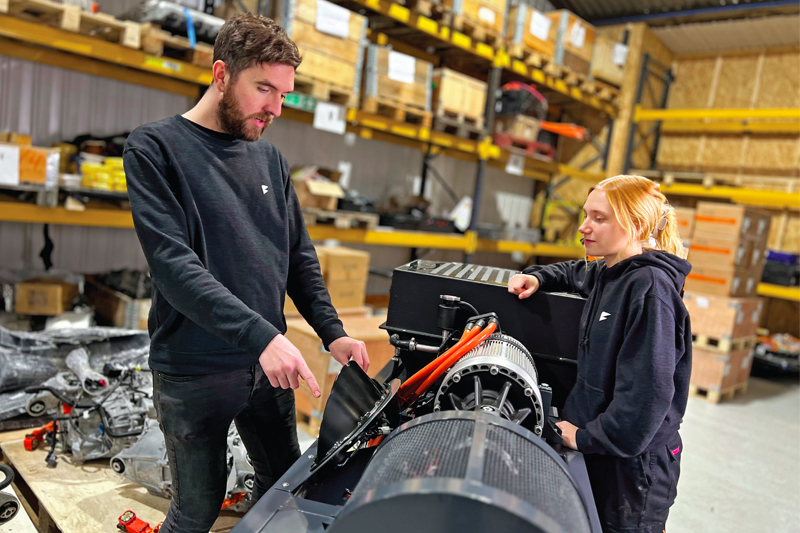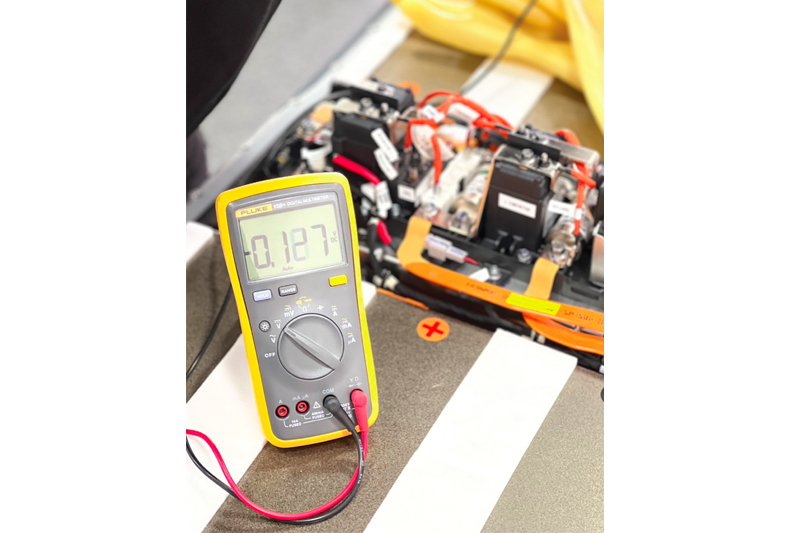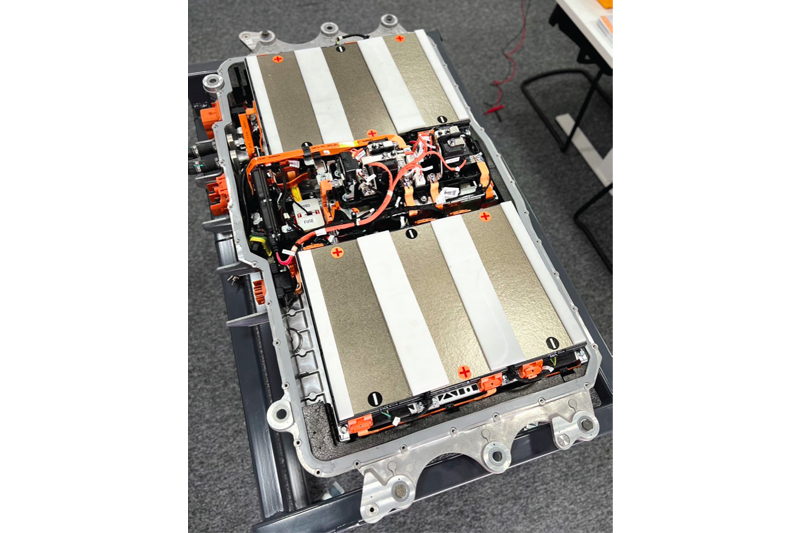
As featured recently on the PMM Podcast, Fellten provide kits and assistance to workshops taking on classic car-to-EV conversion as an extra offering. Here, the team behind the kits answers some of the questions you need to be asking before getting started. This follows on from last month’s article.
Let’s pick up right where we left off last month, with a discussion of the aspects of an EV conversion you need to give careful consideration to.
The cooling system
The motor, inverter and batteries will make heat and may need cooling. It won’t be anywhere near as much as the heat an internal combustion engine makes but it still needs to be dealt with or the inverter or batteries will start de-rating the power to protect themselves. The cooling system ideally includes two cooling loops each with its own pump, radiator and fan. One for the battery/batteries and charger and one for the motor and inverter.
What are contactors and why do I need them?
In the most basic sense, a contactor can be thought of as a very high-power relay. Both a relay and a contactor are electro-mechanical switching devices, where a small current is used to create a magnetic force that closes a physical metal contact to switch a large current/voltage. Contactors differ from relays in that they are designed to switch currents of over 500 amps and operate at voltages up to 500 volts, this switching takes place in an inert gas environment, to be able to disconnect safely at these loads and voltages without welding themselves shut while doing so.
In the EV Industry, the term contactor is used to refer to the electro-mechanical device used anywhere to switch high voltage and current on and off. Typically, they are found at both the positive and negative sides of the main HV battery, the pre-charge circuitry, the on-board charger connection and any devices that have access to switched high voltage power.

On-board charger
Unless you are building a race vehicle or you only ever use DC charging, you will need to have an on-board charger. The on-board charger allows you to connect to standard EV charging points or mains-style 13-amp sockets either at your home, work or in public areas. It turns AC into DC to fill the battery, it responds to the BMS’ instructions. This will need a charge port too, this needs to be very securely mounted somewhere clean and dry.
Master Service Disconnect
It is good practice to have a physical permanent way of rendering your conversion safe. Fitting an MSD provides this. They can be fitted either within the pack HV circuit or on the way out of the enclosure.
DC/DC Converter
Your EV will need to have a DC/DC converter to keep the 12 V battery charged. A DC/DC converter is basically an EV’s alternator that generates the charging voltage for the 12 V battery. EVs still have a normal 12 V battery that needs a charging system since almost all the electronics in the vehicle (headlights, radio, dash display etc.) are 12 V. A DC/DC converter is a module that generates a low voltage charging current using your EV’s main HV Battery as the source and can output as much as 100 amps continuously. Most DC/DC converters are standalone devices, requiring only an ignition switch input to activate the charging output, while others allow control over CAN. These allow the user to activate it, set the output voltage and maximum current as well as receive updates with the system voltage, output current and diagnostics over the CAN bus. Almost all EVs will need a DC/DC converter. Remember, don’t ‘jump start’ an EV from a running ICE car, the alternator may harm the DC/DC when the EV switches on as you ‘jump start’ it.
Cabin heating/cooling
Unless you are lucky enough to live in a warm climate, you are going to need to provide some method to generate cabin heat since there is no ICE engine generating waste heat that can be used to keep the cabin comfortable, and, unless you live in a cool climate, you may want to provide A/C for the cabin. EVs don’t have a spinning engine to turn an A/C compressor or combustion to provide heat, so you have to install something that will do the job: a PTC (Positive Temperature Coefficient) heater and/or an A/C compressor specifically designed for an EV. Many HVAC (Heating Ventilation Air Conditioning) systems exist from EV OEMs and can be repurposed for your EV conversion. Or just buy what you need to provide hot water/AC to the existing set up.
Power steering
If you want to have power steering you need to think about this too. There is no spinning engine to drive a hydraulic pump so accommodations need to be made here too, either via an electric steering column repurposed from an OEM or an electro-hydraulic pump set-up to power a steering box on a truck style chassis or a Land Rover for example.

Power brakes
Typically old ‘power brakes’ are a vacuum operated servo but there is no ICE engine source of vacuum in your conversion; we sell a small 12 V vacuum pump that can be used to provide a source of vacuum to power the brake servo. We recommend using a reservoir system otherwise the pump will be running every time you so much as tap the brakes, which gets annoying after a while. Another option is to re purpose a Tesla model S master cylinder for example. These can be fitted in place the existing servo and are controlled by a small ECU and only require a 12 V feed. Real power brakes and even maybe a hill hold function!
Throttle and gear selection
This can be controlled by a throttle pedal from another vehicle that has a dual hall effect or buy a dedicated unit. A gearstick is nice but buttons or a dial can suffice.









